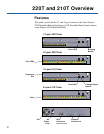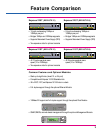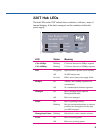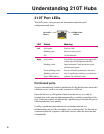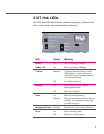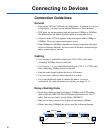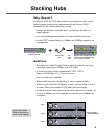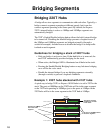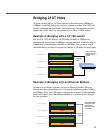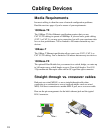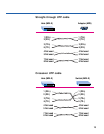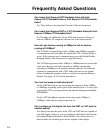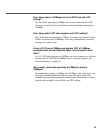
8
Connection Guidelines
General
• Ports on the 220T and 210T hubs are half-duplex. To connect to a device
at full-duplex, you must use the optional Ethernet or Fiber Modules.
• 220T ports are autonegotiating and can operate at 10Mbps or 100Mbps.
The hub matches the highest possible speed of an attached device.
• All ports on the 210T hub operate at the same speed, either 10Mbps or
100Mbps. The ports cannot autonegotiate speed.
• If the 10Mbps and 100Mbps segments are bridged externally (through a
switch or Ethernet Module), be sure to turn off the hub’s internal bridge
before connecting any devices.
Cabling
• Use Category 5 unshielded twisted-pair (CAT 5 UTP) cable when
connecting 100Mbps devices to the hub.
• Use Category 3, 4, or 5 unshielded twisted-pair (CAT 3, 4, 5 UTP) cable
when connecting 10Mbps devices to the hub.
• Limit the cable length between devices to 100 meters.
• Use a crossover cable to connect the hub to a switch.
• Use a straight-through cable to connect the hub to a server or
workstation. For more information on cabling, see pages 12-13.
Daisy-chaining Hubs
• Don’t daisy-chain two hubs operating at 100Mbps with UTP cabling
(this violates the IEEE 802.3u Fast Ethernet specification for Class I
hubs). You must use Intel Cascade Cables (EE200CC).
• Hubs can be daisy-chained only if they are operating at 10Mbps.
• When connecting 10Mbps hubs, please note the following diagram.
1010 10 10
500m (max)
100m (max)
Connecting to Devices





